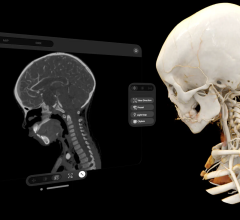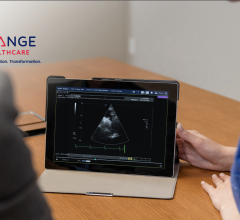
Getty Images
In the dynamic realm of healthcare technology, cardiovascular information systems (CVIS) stand at the forefront, facilitating streamlined operations, enhanced patient care and efficient data management within cardiovascular departments. According to a recent market report from Credence Research, the CVIS market is projected to surge from $1,197 M in 2023 to $2,387 by 2023 — a compound annual growth rate of 7.7%. According to the report, “In the dynamic realm of healthcare technology, cardiovascular information systems stand at the forefront, facilitating streamlined operations, enhanced patient care and efficient data management within cardiovascular departments.”
As technology continues to advance, the landscape of CVIS is evolving, offering novel solutions to address the ever-growing demands of cardiovascular care. Here are a few of the latest trends shaping the future of CVIS.
1. Interoperability and Integration
A growing trend is the emphasis on interoperability and seamless integration with other healthcare systems. CVIS platforms are now designed to integrate with electronic health records (EHR), picture archiving and communication systems (PACS) and other hospital information systems, ensuring smooth data flow and comprehensive patient records. This interoperability streamlines workflows, reduces duplication of efforts and enhances communication among healthcare professionals.
2. Cloud-Based Solutions
Cloud-based CVIS solutions offer scalability, accessibility and cost-effectiveness. They enable healthcare providers to store, access and analyze cardiovascular data securely from any location, promoting collaboration among medical teams and facilitating remote patient monitoring. These solutions often feature advanced analytics capabilities, empowering clinicians with valuable insights for personalized patient care and outcome improvement.
3. Advanced Analytics and Artificial Intelligence
The integration of artificial intelligence (AI) and advanced analytics is transforming CVIS by enabling predictive analytics, risk stratification and decision support. AI algorithms can analyze vast amounts of cardiovascular data to identify patterns, predict outcomes and assist clinicians in making informed decisions. From predicting cardiovascular events to optimizing treatment strategies, AI-powered CVIS solutions are enhancing clinical decision-making and patient outcomes while reducing the burden on healthcare providers.
4. Mobile Applications and Remote Monitoring
With the proliferation of mobile technology, CVIS vendors are increasingly offering mobile applications for remote access and monitoring. These applications enable clinicians to view real-time cardiovascular data, access patient records and collaborate with colleagues from their smartphones or tablets, regardless of their location. In addition, remote monitoring solutions integrated into CVIS platforms empower patients to actively participate in their own care by monitoring vital signs, adhere to treatment plans and successfully make lifestyle modifications, improving engagement and outcomes.
5. Security and Compliance
As the healthcare industry faces escalating cybersecurity threats, security and compliance remain paramount concerns for CVIS implementations. Vendors are adopting robust security measures, such as encryption, authentication protocols and audit trails to safeguard sensitive patient data a\gainst unauthorized access and breaches. In addition, CVIS platforms adhere to regulatory requirements, such as HIPAA, to ensure patient privacy and compliance with data protection standards.
6. Telemedicine and Virtual Care
The COVID-19 pandemic accelerated the adoption of telemedicine and virtual care solutions across healthcare domains. CVIS platforms now incorporate telemedicine functionalities, enabling virtual consultations, remote diagnostics and telemonitoring of cardiac patients. These virtual care capabilities enhance access to cardiovascular services in remote or underserved areas, and also minimize the risk of exposure to infectious diseases and improve patient convenience.
7. Patient-centric Approaches
There is a growing emphasis on patient-centric approaches in CVIS design and implementation. User-friendly interfaces, personalized dashboards and patient portals empower individuals to actively engage in managing their cardiovascular health. CVIS platforms support shared decision-making between patients and healthcare providers by providing access to educational resources, treatment options and self-management tools, fostering a collaborative and patient-centered care environment.
Cardiovascular Information Systems continue to evolve in response to technological advancements, changing healthcare landscapes and evolving patient needs. From interoperability and cloud-based solutions to AI-powered analytics and telemedicine, the latest trends in CVIS are reshaping cardiovascular care delivery, enhancing clinical outcomes and improving patient experiences. You can do a side-by-side comparison of some of the leading cardiovascular information systems by viewing DAIC’s newly updated CVIS Comparison Chart.


 May 01, 2024
May 01, 2024 









